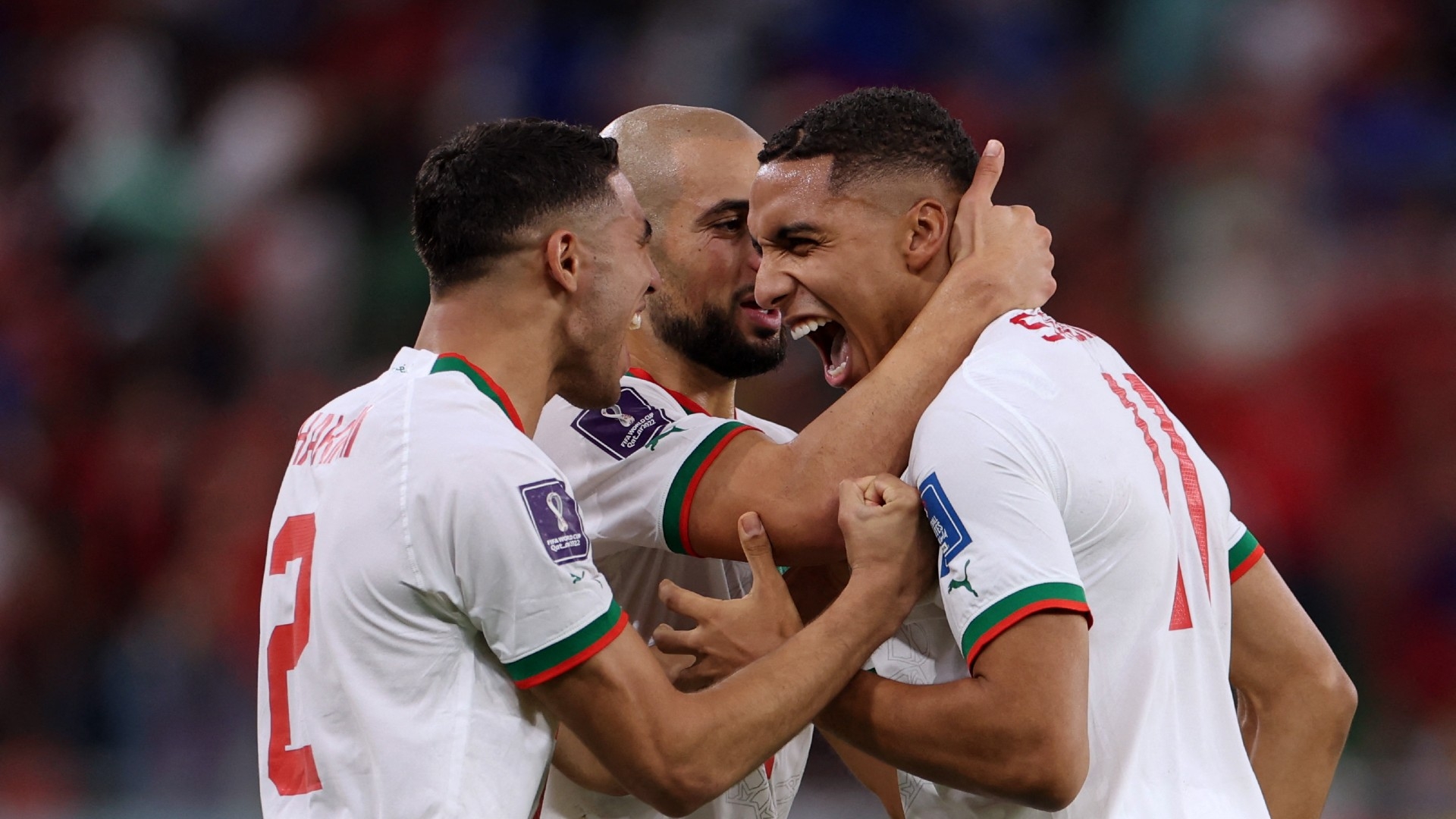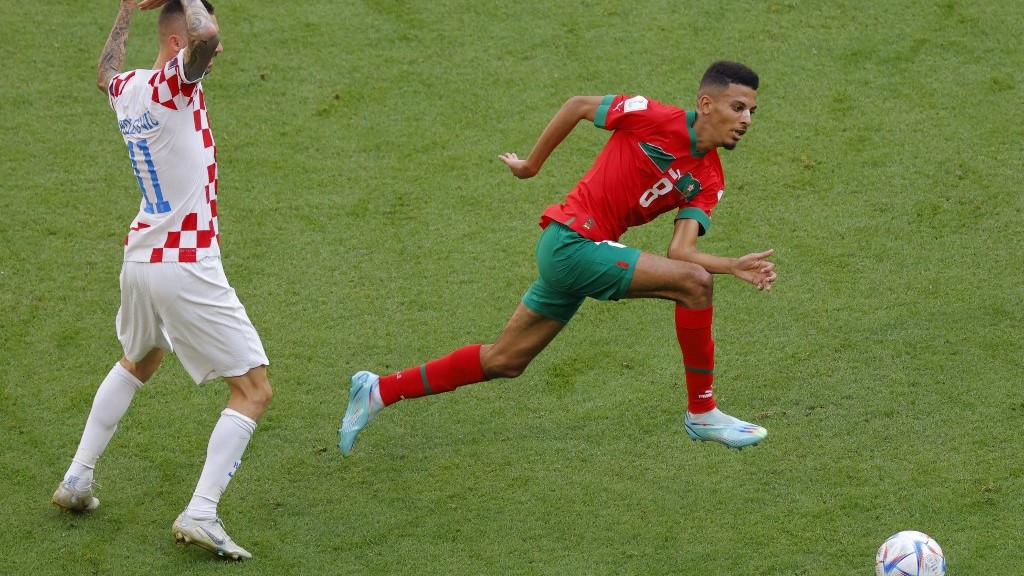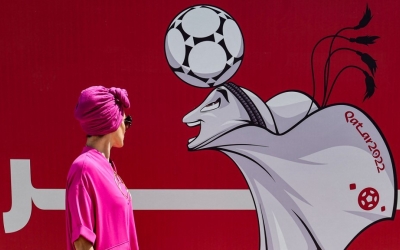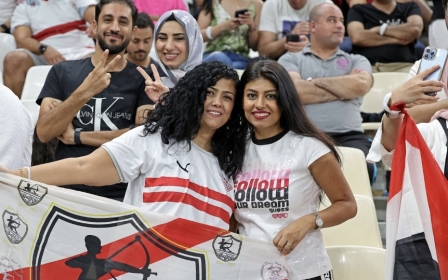Qatar World Cup: A historic tournament for Arab nations, on and off the pitch

Through its successful World Cup bid in 2010, Qatar made history as the first Middle Eastern country to host arguably the biggest sports tournament in the world. There were also hopes that it would be a historic tournament on the pitch for teams across the region.
The number of Arab teams qualifying to compete at the World Cup has been trending upwards in recent years, with four nations represented in 2018, compared to just one in 2010 and 2014 (Algeria) and two in 2002 and 2006 (Saudi Arabia and Tunisia). Four are again participating this year: Qatar qualified automatically as the host nation, and Morocco, Saudi Arabia and Tunisia make up the rest of the contingent.
Both Algeria and Egypt could have swelled the number of Arab nations to a historic level this year, but for a sudden-death goal from Cameroon and an ill-fated penalty shootout defeat to Senegal respectively. The UAE also deserves a mention for being close to qualifying for only the second time in the nation’s history.
Without a doubt, the coming games will provide plenty of inspiration for future generations of Arab footballers
Although Arab teams have a long history at the World Cup, with Egypt being the first Arab nation to qualify in 1934, only eight have ever managed to qualify, with the others including Iraq, Kuwait, and the UAE. So far in the current tournament, we have seen each of the four competing Arab nations play their first game, marking a good juncture to reflect on their on-field progress.
The standout performance went to Saudi Arabia, which pulled off a 2-1 victory against two-time World Cup winners Argentina on Tuesday. This seismic victory was unprecedented for an Arab team. Argentina is the third-best men’s football team in the world, according to Fifa rankings, and a favourite to win this year’s tournament. Saudi Arabia, ranked 51, was the clear underdog.
New MEE newsletter: Jerusalem Dispatch
Sign up to get the latest insights and analysis on Israel-Palestine, alongside Turkey Unpacked and other MEE newsletters
The Moroccan and Tunisian national teams also came away with creditable draws against Croatia and Denmark respectively. The only disappointment was the opening game of the tournament, which saw host nation Qatar defeated 2-0 by Ecuador.
Experience counts
While admittedly a small sample size, these results point to some trends. For one, experience counts for something: Morocco, Saudi Arabia and Tunisia have competed at six World Cups each, with Saudi Arabia being the first Arab team to reach the World Cup four times in a row, after qualifying in 1994, 1998, 2002 and 2006.
On the other hand, this is Qatar’s first World Cup, and the added weight of expectations carried by a host nation probably took its toll on players in the first game. Still, if Qatar’s success at the continental level is anything to go by - winning the Asia Cup for the first time in 2019 - they may yet grow into the tournament and leave their mark.
The other trend is that Arab teams are becoming more competitive once they qualify for a World Cup. An analysis of data over the past two decades shows an increase in points won by Arab teams in the group stage: one in 2002 and 2010, two in 2006, four in 2014, and seven in 2018. Although still early days, the four Arab teams in the current tournament have already won five points in the group stage, with two games for each team still to play. A record-breaking achievement is realistically within reach.
But a knock-out tournament like the World Cup is not just about winning points. The participating teams will be hoping to emulate, and maybe go a step further, than Algeria in 2014, Saudi Arabia in 1994 and Morocco in 1986, all of whom reached the round of 16.
This gradual improvement that has seen Arab teams gain competitiveness can be attributed largely to two differing approaches.
The first approach, favoured by North African teams, involves assimilating and integrating an increasing number of dual nationals and footballers from diaspora communities across Europe - a trend influenced by colonial history and migration patterns. The other approach is a sizeable and long-term investment in domestic football ecosystems, favoured by the Gulf states. It follows that the more affluent a country is, the more it can invest resources and capital into the success of its sports institutions.
Neither of these approaches are specific to Arab teams, nor a guarantee of success. At the Qatar World Cup, 16 percent of the players on all teams represent a country other than their birthplace - 137 players in total. Morocco tops the list, with 14 players on their 26-man team born overseas. Tunisia has 11.
Sustained investment
A Moroccan football expert with whom I spoke highlighted the increasing success with which Morocco’s football association has targeted these players and enticed them to represent the national team rather than their country of birth. These players often benefit from a footballing education at some of Europe’s finest academies, and progress from an early age to play at the most competitive level.
Take, for example, Munir El Haddadi, an attacker on the Morocco team, who was born in Spain and came through the youth ranks of Atletico Madrid before transferring to Barcelona. He initially represented Spain at the international level before switching allegiance to Morocco in 2021.
The same can be said of Morocco’s star players, Spanish-born Achraf Hakimi and Dutch-born Hakim Ziyech. Increasingly, North African teams are becoming more sophisticated at spotting these talents and integrating them into a cohesive and united squad that can compete with the world’s best teams.
The other approach of heavy and sustained investment has shown positive results in Saudi Arabia and Qatar. The Saudi Pro League, the top division of football in Saudi Arabia, only became fully professional in 2007. Yet, in less than a decade, it was ranked as the 27th strongest national league in the world by Fifa, ahead of more established football leagues such as Chile, Denmark and Egypt. This was achieved through investing in both human capital (coaches and players from overseas to improve the overall quality) and infrastructure (training facilities and stadia).
In 2004, Qatar founded the Aspire Academy to implement a vision of sporting development for the nation, attracting and nurturing talents from the age of five. The academy is estimated to have cost $1.3bn and was launched by football legend Pele, drawing praise from other stars, such as Zinedine Zidane. An incredible 18 Aspire graduates, including 10 who were in the winning 2019 Asia Cup squad, make up the 26-man Qatar squad for the 2022 World Cup.
Still, there is room for improvement. The fact that there have only ever been eight Arab countries to participate at a World Cup means that much of the success is reserved to a small pool of nations. Initiatives like the Fifa Arab Cup are a good step towards improving quality and competitiveness across the region, in hopes of more countries making it to the biggest global stage.
Without a doubt, the coming games will provide plenty of inspiration for future generations of Arab footballers.
The views expressed in this article belong to the author and do not necessarily reflect the editorial policy of Middle East Eye.
Middle East Eye delivers independent and unrivalled coverage and analysis of the Middle East, North Africa and beyond. To learn more about republishing this content and the associated fees, please fill out this form. More about MEE can be found here.






